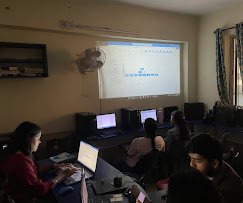Why Python Is the Best Language for Data Science — Learn from the Best Data Science Classes in Ranchi at Plaza Chowk
Why Python Is the Best Language for Data Science — Learn from the Best Data Science Classes in Ranchi at Plaza Chowk In the ever-evolving world of technology, Data Science has emerged as one of the most powerful fields driving business growth, innovation, and decision-making. Behind the success of most data-driven projects lies one versatile programming language — Python. Known for its simplicity, flexibility, and vast library support, Python has become the top choice for Data Scientists across the globe. If you are in Ranchi and looking to start your journey in Data Science, the best data science classes in Ranchi at Plaza Chowk can help you master Python and become a job-ready data expert. Let’s explore why Python stands out as the best language for Data Science and how the right training can shape your future. 1. Simplicity and Readability: The Power of Python’s Design One of the biggest reasons why Python dominates Data Science is its clean and readable syntax. Unlike other programming languages such as Java or C++, Python allows learners to focus on solving problems rather than worrying about complex coding structures. For beginners, this simplicity makes learning faster and more enjoyable. For professionals, it allows for rapid prototyping and testing of ideas. Whether you are analyzing data, visualizing trends, or building predictive models, Python helps you do it effortlessly. 2. Extensive Libraries and Frameworks Data Science involves dealing with massive amounts of data — collecting, cleaning, analyzing, and visualizing it. Python makes this process smooth and efficient through its powerful libraries, such as: These libraries eliminate the need to write code from scratch, saving time and effort while ensuring accuracy and performance. 3. Python’s Role in Machine Learning and Artificial Intelligence Machine Learning (ML) and Artificial Intelligence (AI) are at the heart of modern Data Science. Python’s easy syntax, along with its ML and AI libraries, makes it the most preferred language for developing intelligent systems. With Python, you can build models that predict customer behavior, detect fraud, forecast sales, or recommend products — all of which are crucial for today’s businesses. Its strong community support also means that learners and professionals can find tutorials, tools, and updates easily, helping them stay ahead in the tech industry. 4. Data Visualization Made Easy Data visualization is an essential part of Data Science — it helps turn raw data into meaningful insights. Python makes this process simple and powerful through tools like Matplotlib, Plotly, and Seaborn, which help create interactive graphs, heat maps, and dashboards. These visualizations are used in business reports, presentations, and research projects, helping decision-makers understand trends and make informed choices. 5. Integration and Versatility Python is not limited to just one domain — it integrates seamlessly with other technologies like SQL, Hadoop, Tableau, and Excel, making it suitable for end-to-end data workflows. Whether it’s web development, automation, or cloud-based data solutions, Python fits perfectly into every environment. Its cross-platform compatibility allows developers to run Python code on multiple systems without modification, making it highly flexible for professionals working on large-scale projects. 6. Growing Career Opportunities Python’s dominance in Data Science has led to a massive demand for professionals skilled in it. Companies in finance, healthcare, e-commerce, and IT are constantly hiring Python-based data analysts, data engineers, and data scientists. By learning Python through the best data science classes in Ranchi at Plaza Chowk, you can gain the skills needed to enter this lucrative career path. Training centers in Ranchi offer hands-on learning with real-world datasets, making you ready for job interviews and placements in top companies. 7. Best Data Science Classes in Ranchi — Learn from Experts If you’re serious about building a career in Data Science, joining the best data science classes in Ranchi, Plaza Chowk is the perfect starting point. These institutes offer: These features ensure that students not only learn Python theoretically but also gain the confidence to apply it in real-world scenarios. Conclusion Python has earned its place as the best programming language for Data Science because of its simplicity, versatility, and powerful ecosystem of libraries. It empowers professionals to analyze complex data, build predictive models, and drive innovation across industries. For students and professionals in Ranchi, enrolling in the best Data Science classes at Plaza Chowk is your gateway to mastering Python and starting a successful career in Data Science. With expert trainers, hands-on projects, and placement support, you’ll be ready to join the world of data-driven innovation.









